Electric vehicles are no longer on the horizon — they’re here. By the end of 2021 there were more than two million EVs on the road in the United States alone. That number is expected to double in 2022 and will continue to rise at an extraordinary rate. However, there is still work to be done to overcome hesitation and accelerate the push towards 100% electric vehicles and a more sustainable future.
The first step to support this EV revolution is a significant investment in electric vehicle supply equipment (EVSE). Despite being an already multi-billion dollar market in the United States, the availability and reliability of EV infrastructure has been a major concern and key reason why many drivers have delayed the switch from their gas-powered vehicles. However, the recent Infrastructure Investment and Jobs Act passed by Congress has pledged $7.5 billion to developing a national network of electric vehicle chargers in the United States. This will support President Biden’s ultimate goal to install over 500,000 public EV chargers by 2030 — and hopefully much sooner.
As concern around long distance charging accessibility is alleviated and the EV adoption rate further increases, new issues will climb to the forefront. What are the types of EV chargers? Which should be used? When and how should charging take place? How can consumers ensure a seamless charging experience? Learn all about EV charging best practices in this EV Charging Guide from c3controls.
Types of EV Chargers
Let’s start our EV Charging Guide with an overview of the different types of charging stations. Keep in mind that the estimated charging rates are variable, based on many factors such as charging rate of the vehicle, charging rate of the station, battery size, battery fullness and environmental elements such as temperature.
Level 1 EV Charger
Electric vehicle manufacturers typically supply a Level 1 charging accessory upon the purchase of the vehicle. These chargers use a 120VAC plug for use with a standard household outlet and do not require the installation of any additional electrical equipment. The most basic type of EV charging, Level 1 is the least expensive option but also the most time consuming — Level 1 chargers only yield a maximum of about five miles of range per hour. Homeowners will typically use Level 1 overnight to add about 40 miles of range.
Level 1 chargers are best suited for an average commuter who travels less than 40 miles per day. Many EV owners find that upgrading to a Level 2 charger is required to meet their charging needs. In this case, the Level 1 charger can become a portable option, stored in the vehicle for use in an emergency or when charge time is not a factor.
Benefits of Home Charging for Electric Vehicles
Faster Charging: Upgrading to a Level 2 charger offers significant advantages, providing the ability to charge your vehicle 5 to 7 times faster than a Level 1 charger. This efficiency is especially beneficial for those with longer commutes or multiple daily trips, reducing reliance on public charging stations.
Convenience: Charging your EV at home offers unparalleled convenience. By simply plugging in your car overnight, you ensure it's ready to go by morning. This routine is ideal for most EVs, which typically have enough range for daily commutes, effectively eliminating the hassle of frequent public charging.
Cost Savings: Home charging is not only more convenient but also more economical compared to public charging or gasoline. EV drivers can enjoy substantial annual savings on fuel and maintenance. To maximize cost efficiency, it's advisable to charge during off-peak hours, such as from 7 PM to 7 AM on weekdays, when electricity rates are typically lower. Additionally, using online tools to compare electricity and gasoline costs can help you visualize your potential savings.
Level 2 EV Charger
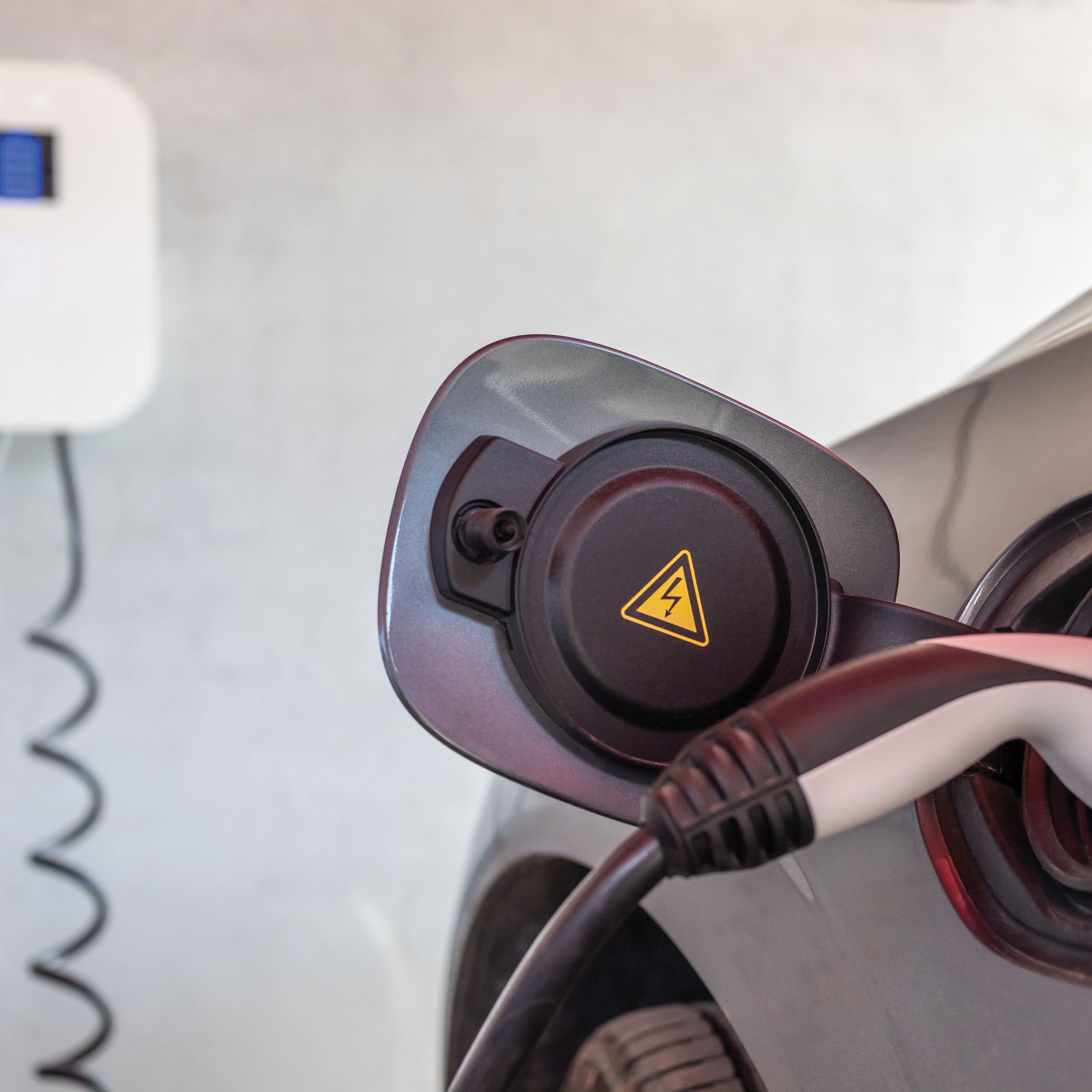
Similar to Level 1, Level 2 chargers are alternating current (AC) charging stations that utilize the on-board charger in the car to convert an AC input to direct current (DC) to charge the battery. One difference with Level 2 chargers is that they are built to manage higher voltages and current — these stations typically operate up to 20kW and can add over 200 miles of range when charging overnight. Another difference is that unlike Level 1, Level 2 chargers cannot be plugged into a standard wall outlet — instead they require a 240V plug for residential or a 208V plug for commercial applications. When required, these installations should be conducted by a professional electrician.
Level 2 chargers can also be installed with a solar panel system which uses renewable energy to create the electricity needed for EV charging. A variety of charging options makes Level 2 charging a solution for both residential homeowners who need faster charging and commercial businesses who want to offer charging stations to their customers and employees.
The ‘sweet spot’ of electric vehicle charging, Level 2 is a much more efficient overnight or medium-term charging solution compared to Level 1. Level 2 chargers best cover heavy commuters who travel up to 100 miles per day and over 80% of passenger vehicles can be completely covered by Level 2! The hardware cost of Level 2 EVSE in a residential application is typically around $500 to $800. Other financial considerations include potential installation costs, utility rebates and the additional monthly charge to one’s electric bill.
Level 3 - DC Fast Charger (DCFC)
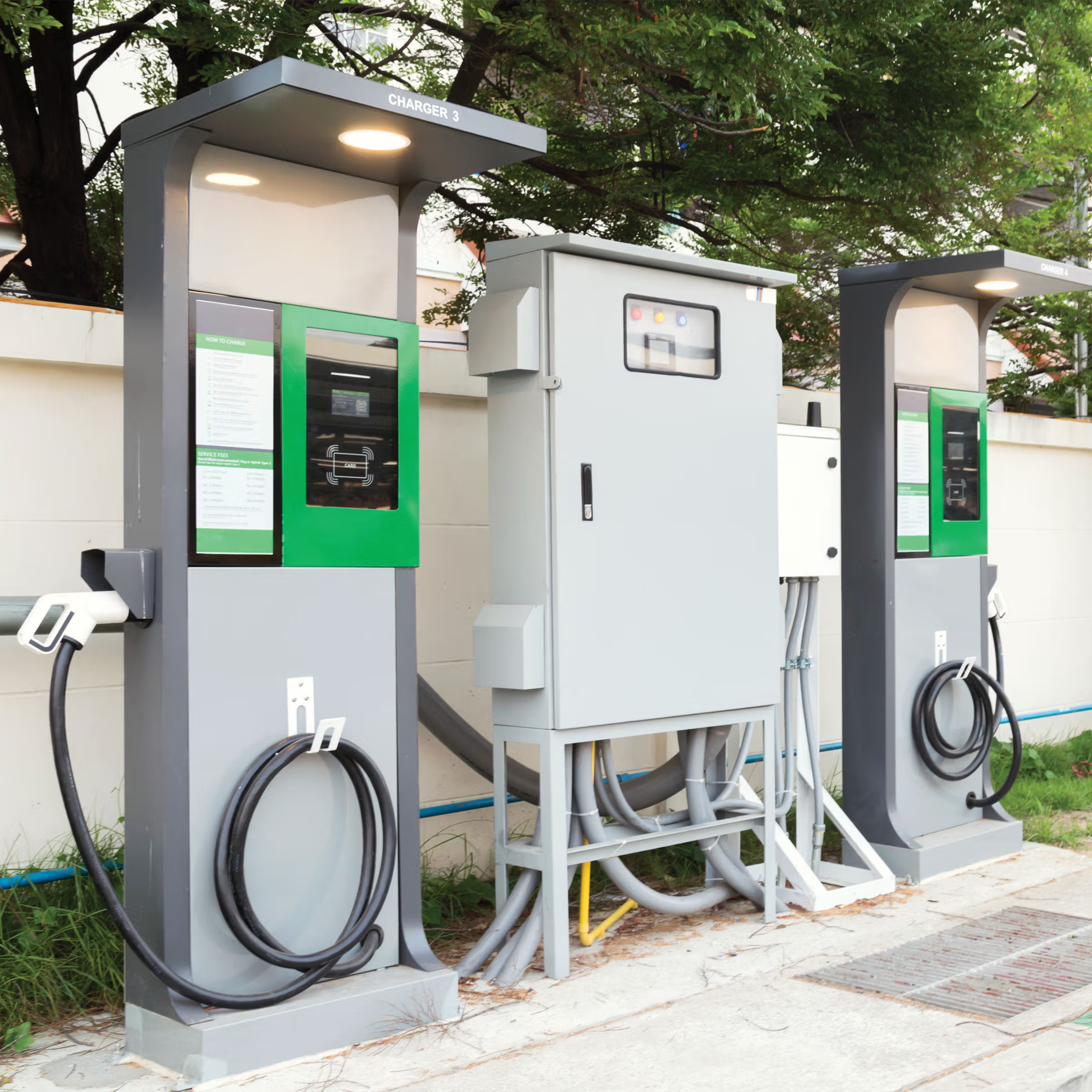
Level 3, DC fast charging stations or ‘superchargers’ directly feed DC supply to the EV battery, bypassing the converter on-board the vehicle. Operating at a power anywhere from 25 to 350 kW, a DCFC can charge the vehicle in as little as 30 minutes! However, this convenience comes at a cost as Level 3 chargers range from $25,000 to $200,000, making them unaffordable for most consumers.
Level 3 charging stations are most comparable to gas stations in terms of both time and cost. However, DC fast charging should be limited as extensive use places substantial demand on the electrical grid and can negatively impact battery performance and durability. To manage the strain on both grid and battery, DCFC is not accessible in residential applications and is only available in select commercial/industrial applications. DC fast charging is prioritized to accommodate long distance driving and large fleets.
The current lack of Level 3 EVSE has driven the concept of ‘range anxiety,’ the worry that an EV will run out of battery before reaching a charge point. The installation of DCFC in commercial areas such as highway rest stops is a key point of the Infrastructure Investment and Jobs Act which will mitigate range anxiety and accelerate EV adoption.
Wireless EV Charger
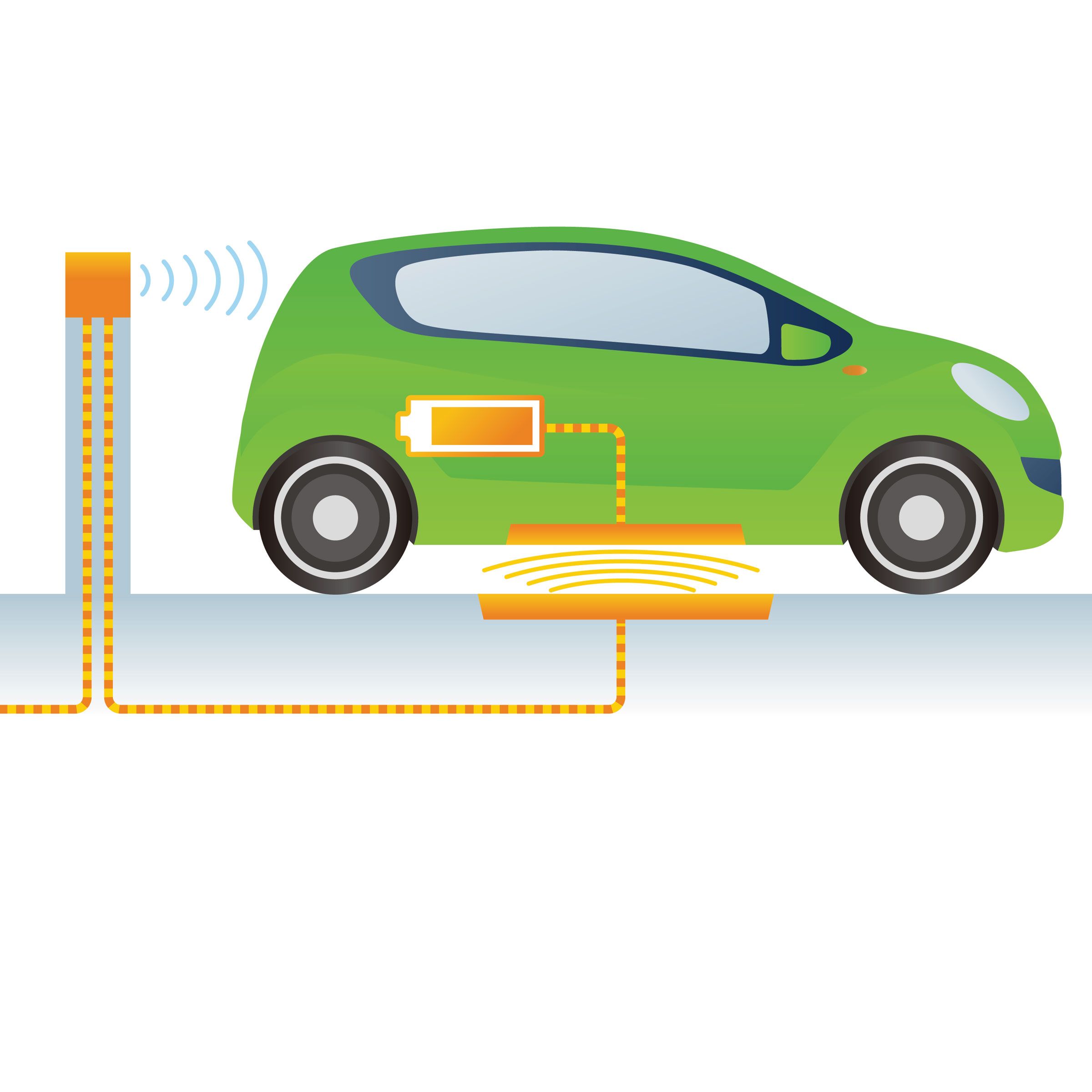
Wireless charging is an emerging technology and trend to look out for in the EV industry. The wireless charging process is similar to that of your smartphone or any other inductive charging technology. To initiate the charging sequence, a grid-connected ground charging pad with a primary induction coil creates an alternating electromagnetic field. Then, a secondary coil built into the underside of the vehicle assembly receives and converts the electromagnetic field into an electric current which effectively recharges the car's battery. Wireless signals between the charge pad and the vehicle align, initiate and terminate charging when necessary.
Built with the goal of providing the ultimate user experience, wireless charging is as simple as park and charge — no touch, no thought, no stress. This inductive charging technology also eliminates some of the challenges associated with conductive charging such as cable handling, heat, space and human error. Currently, wireless charging offers speed and efficiency comparable to Level 2 plug-in chargers.
Wireless EV charging does not come without drawbacks. The main hurdle is a big one — cost. If an electric vehicle owner wants to utilize wireless charging today, they will likely need to have their vehicle upgraded to accommodate wireless charging and will need to pay for charging hardware and installation. However, wireless charging has been built into global EV standards and capability could be deployed in all electric cars as soon as 2025. As it stands, wireless charging is best suited for commercial fleet and autonomous applications, yet wireless could become more feasible for residential applications in the coming years.
EV Charging Best Practices
Now that we know the types of chargers, we’ll continue our EV Charging Guide with some best practices to keep in mind while charging:
Have the right charger installed

The first step is deciding which method of charging detailed above meets your wants and needs. If you are an average commuter, traveling less than 40 miles per day, you can likely rely on charging overnight with Level 1. However, if you are a heavy commuter, frequently traveling 40 to 100 miles per day, you will need to upgrade to Level 2. In the rare case that you are a professional commuter, usually traveling over 100 miles per day, you will need Level 2 charging at home along with extensive knowledge about commercial charging options along your route.
Expected usage isn’t the only reason to upgrade charging capability. Many electric car owners will upgrade to networked Level 2 in order to utilize smart charging features, which will be discussed later on. A major benefit of installing smart, networked EVSE is that many utilities offer residential customers incentives for doing so such as discounts on hardware and/or installation costs. Make sure you talk to your utility provider to see how much you could save!
It is also important to consult with a professional electrical contractor to help select and install your charging station. Familiar with all local, state and national regulations, your electric contractor can inform you what, if any, electrical upgrades will be required to install your EVSE. They will also know if you are required to submit an installation plan for approval prior to installation. If you are looking to strengthen your knowledge prior to your discussion with a professional, read National Electric Code (NEC) Article 625 which details EVSE installation requirements.
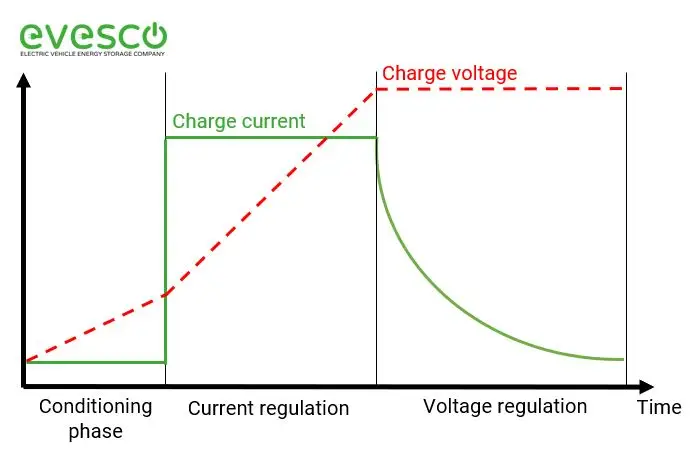
(Source: https://www.power-sonic.com/blog/the-ultimate-guide-to-dc-fast-charging/)
One thing you should not need to consider when selecting a Level 2 charger is compatibility — every electric vehicle in North America can charge Level 2 with SAE J1772, the standard electrical connector for Level 1 and Level 2 charging maintained by the Society of Automotive Engineers. While Tesla vehicles are not naturally compatible with the J1772 connector, every Tesla model comes with an adapter that easily connects to the charger’s J1772 plug.
Benefits of Government Incentives for Workplace Charging
Government incentives can revolutionize the way workplaces incorporate electric vehicle (EV) charging stations, providing valuable benefits for both employers and employees.
Financial Relief for Employers
One of the most significant advantages is the financial support offered. Many governments provide subsidies and tax breaks to offset the installation costs. This financial assistance can reduce the initial investment required, making it more affordable for businesses of all sizes to enhance their facilities.
Boosting Employee Satisfaction
Workplaces that offer EV charging stations can enhance employee satisfaction. Employees with electric vehicles benefit from the convenience of charging at work, reducing their reliance on home or public charging options. This support can lead to a happier, more motivated workforce.
Promoting Sustainability
Incentives encourage businesses to adopt greener practices by making it easier to shift towards sustainable infrastructure. Installing EV chargers demonstrates a company’s commitment to environmental responsibility, which can enhance its public image and appeal to eco-conscious consumers and partners.
Improving Workplace Culture
Providing charging stations is not just about convenience but also about fostering an inclusive workplace culture. This initiative shows that a company values forward-thinking, sustainable practices, which can attract top talent interested in working for environmentally responsible employers.
How Employees Can Help
Knowledge is power. Employees can play a crucial role by enlightening their employers about the available incentives. Sharing information about these benefits can initiate conversations and push for the adoption of EV charging at workplaces, resulting in a win-win situation for everyone involved.
By tapping into these incentives, workplaces can not only reduce costs but also contribute positively to a greener planet, building an environment where innovation and sustainability thrive together.
Utilize smart charging features
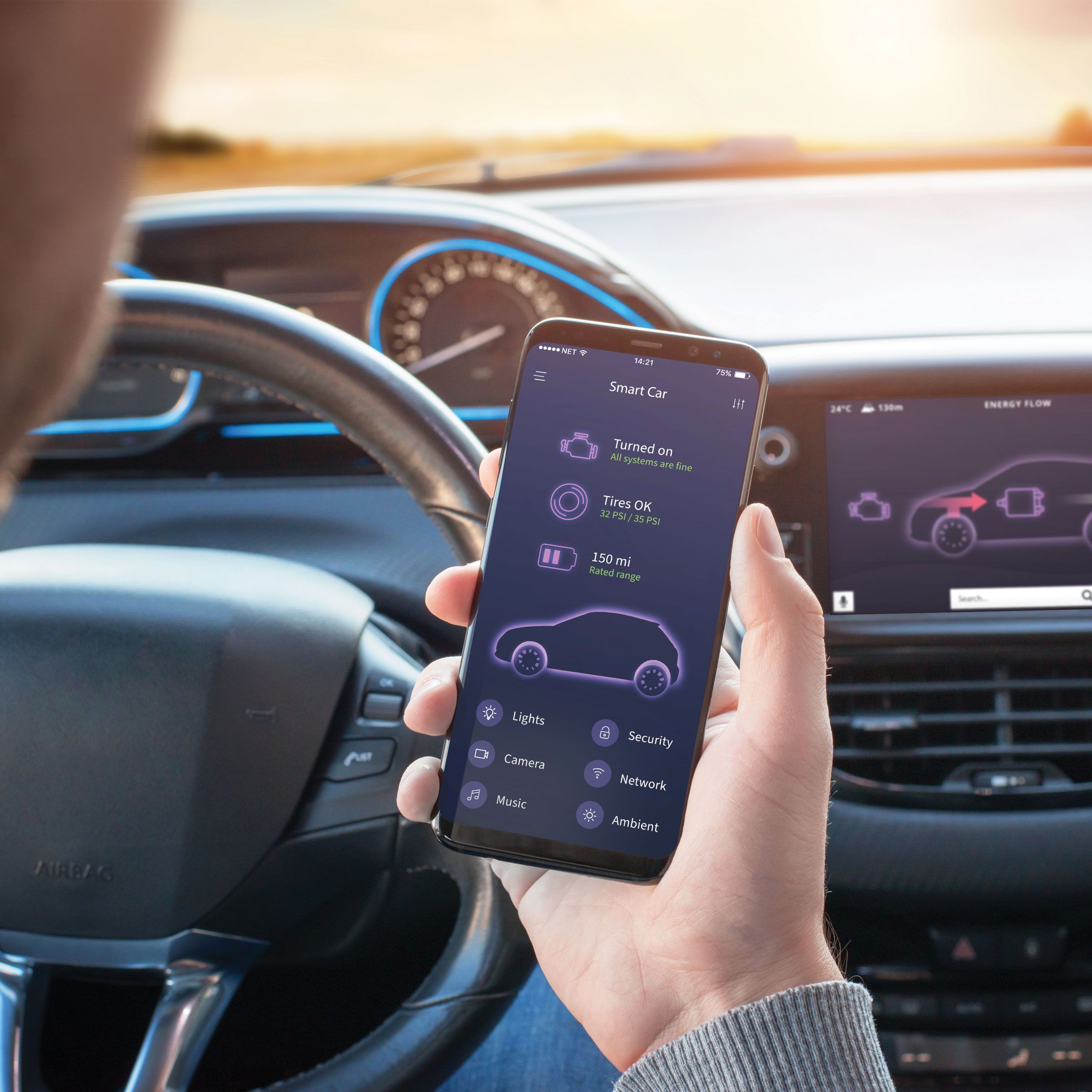
Smart charging, or smart energy management, is a system where an electric vehicle, a charging station and a charging operator share a data connection. The exchange of data optimizes the electric vehicle charging experience by allowing drivers to monitor, forecast, schedule and completely control the EV charging process, all from their smartphone. Smart chargers can automatically charge during off-peak hours when energy rates are lower, saving users money and balancing supply and demand for the electrical grid.
Networked EVSE is continuing to evolve in a way which will benefit both the EV owner and the utility. A critical part of this evolution will be a bidirectional charging feature in more electric car models. For an explanation, lets breakdown three key segments of smart charging:
- V1G - The simplest form of smart charging, V1G is unidirectional, dynamically controlled charging where a user can modify charge rate and time in response to grid demand.
- V2G (vehicle-to-grid) - An emerging trend, V2G involves bidirectional, two-way charging between the charging station and the electric vehicle. During peak demand, energy from the battery can be sold back to the grid. When demand is balanced, the system will adjust and charging will resume.
- V2X (vehicle-to-everything) - V2X is bidirectional charging in which electricity is transferred from the battery to a house, building or any other energy-consuming destination. This method of smart charging provides an emergency energy source during a power outage, among other benefits.
There are a variety of current and emerging smart charging attributes that can help you understand your electric vehicle charging, make informed decisions and save money during the process. Though beneficial, networked EVSE is not mandatory. Charging your electric car can be as easy as charging your smartphone, simply plug-in and see your charge status/level. However, without improvements, the electrical grid will be unable to meet demand if the majority of EVs are charged in a non-networked fashion. To avoid this, homeowners will not be considered for utility incentives unless they install networked EVSE. A win-win for users and utilities, make sure to explore smart charging features on your electric vehicle journey.
Know where to charge away from home
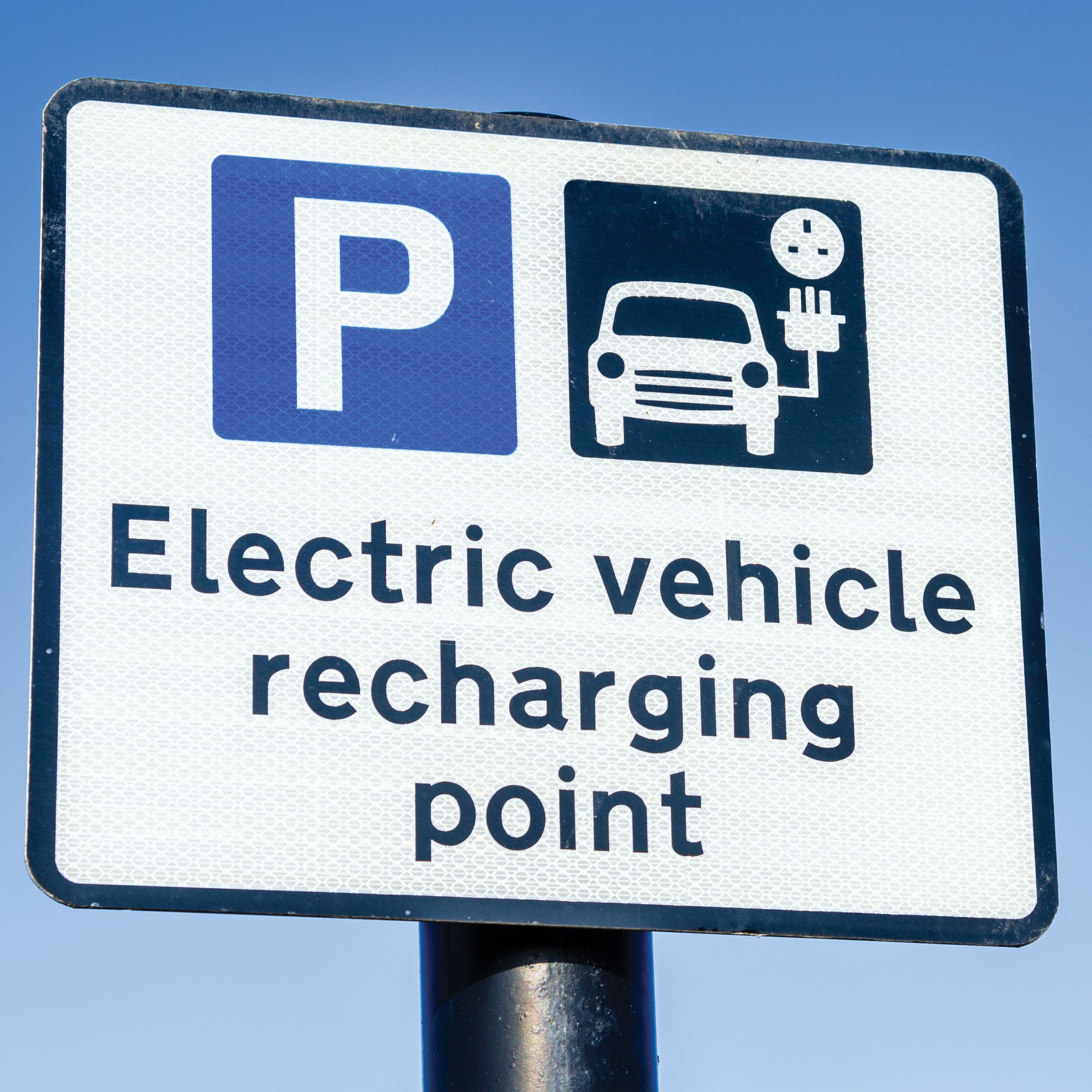
While over 80% of EV charging happens at home, a straightforward best practice is to be prepared when home charging is not an option. To do so, start by installing your charging station network on your smartphone and creating a free account. You will be able to find available charging stations almost anywhere you travel. The charging network will also allow you to initiate charging once at a station and complete payment.
When using DCFC you should also have knowledge of your connector for Level 3 charging. The majority of electric cars fast charge with a CCS (Combined Charging System) connector which combines the J1772 charging inlet with high speed charging pins. There are a few exceptions such as select Nissan and Mitsubishi models which use a CHAdeMO connector. The third and final DCFC connector type is the Tesla standard plug. While Tesla Superchargers are currently exclusive to Tesla owners, the leading EV manufacturer plans to add CCS connectors to their network in late 2022.
A major advancement in public charging is interoperability, the ability of multiple charging networks to exchange and utilize information. Electric vehicle drivers are increasingly able to find and use nearby charging stations regardless of their network, simplifying the user experience as users do not have to worry about installing multiple networks. This Open Charge Point Protocol (OCPP) goes a long way in taming range anxiety.
If you’re on a long road trip, the safest way to further eliminate range anxiety is to plan ahead. In these circumstances, make sure to pinpoint Level 3 chargers along your route before you leave. Lastly, remember that charging your electric vehicle is not meant to mimic the current gas station model. Even if you are using high-speed Level 3, the charging process will still take around 30 minutes to reach 80% charge — so plan accordingly.
Protect your EV battery
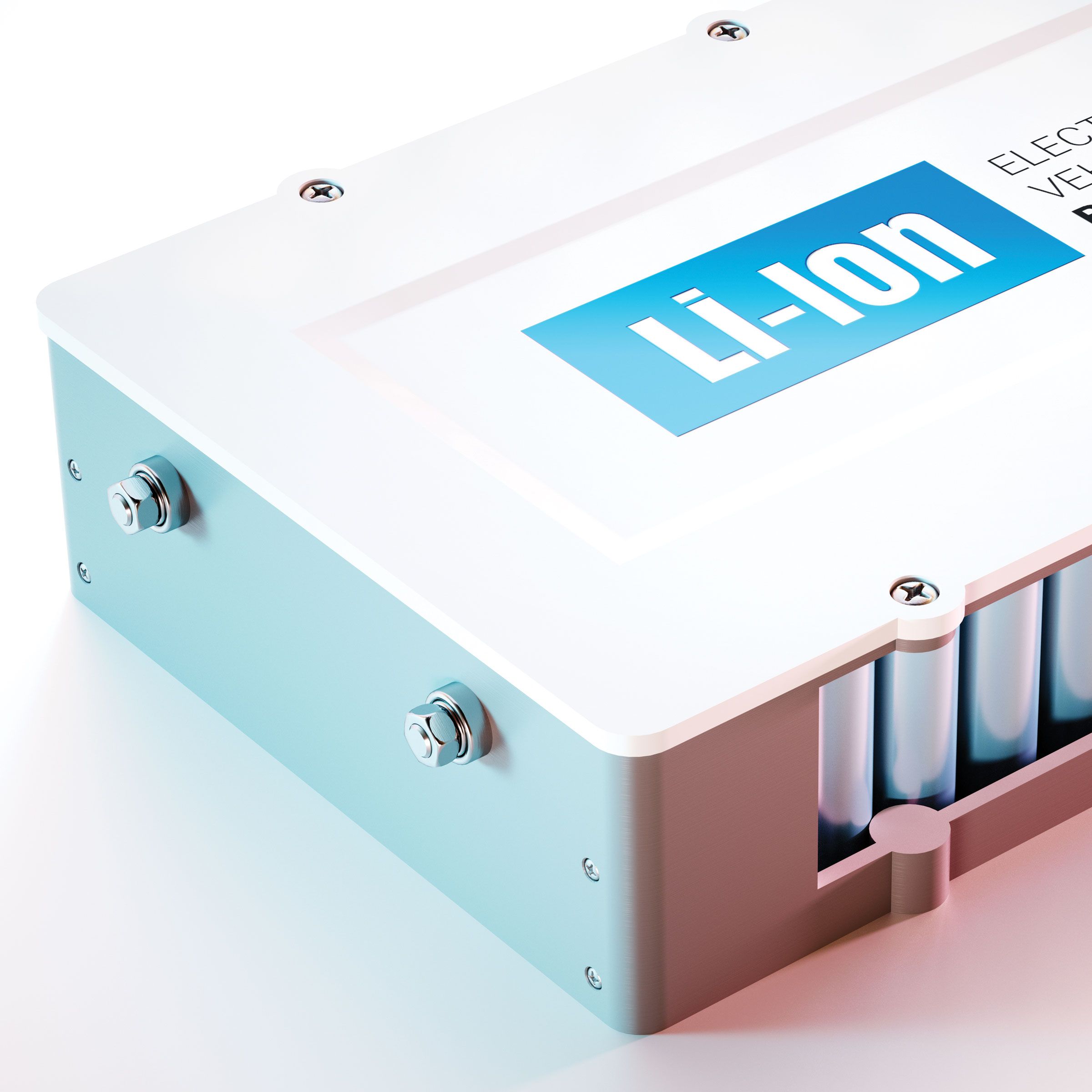
Under current estimates, the EV lithium-ion battery life is somewhere between 10 and 20 years. To maximize this lifespan, users must take proper precautions such as the following:
- Schedule your charge - Charging overnight is ideal, but make sure you are not charging your car for too long — unplugging and driving away immediately while the battery may still be hot can be detrimental.
- Limit fast charging - Fast charging is convenient and sometimes necessary, yet should be limited. Compared to standard charging, eight years of fast charging would take approximately 10% off of the EV battery life!
- Utilize the middle 50% - Try to maintain your charge level between 25% and 75%. Avoiding a full charge leaves space for regenerative braking to convert kinetic energy into usable energy.
- Watch the temperature - If unplugged and exposed to extreme cold or heat, the temperature control system can drain and degrade the battery.
- Slow down - The easiest way to conserve energy is to keep your foot off the accelerator. Decreasing your speed increases your battery life.
Advantages of Workplace Charging for Electric Vehicles
Electric vehicles (EVs) present a sustainable driving option, and workplace charging enhances their practicality. Let’s dive into the benefits that make workplace charging a compelling choice for EV owners.
Extend Your Daily Range
Combining workplace and home charging nearly doubles your EV's electric range. Plug-in hybrid owners especially benefit, maximizing electric usage and minimizing reliance on gasoline. This expanded range translates into cost savings, as electricity tends to be cheaper than conventional fuel.
Boost Your Charging Speed
Level 2 chargers at workplaces allow you to juice up faster. This is ideal whether you're in the office briefly or if charging demand is high during peak commuting hours. Quick recharges mean your EV stays ready for longer journeys or unexpected trips.
Cut Transportation Costs
Some employers offer complimentary charging, letting you top-off your battery for free. If there’s a fee, it usually undercuts public charging station rates, making it a more economical option. This reduction in transportation expenses adds up over time, benefiting your wallet.
Benefit from Government Incentives
In numerous regions, governments incentivize businesses to install EV charging stations. However, not all employers are aware of these opportunities. Encouraging your employer to explore these incentives can lead to more charging options at work, supporting a greener commute for everyone.
EV Charging Station Components
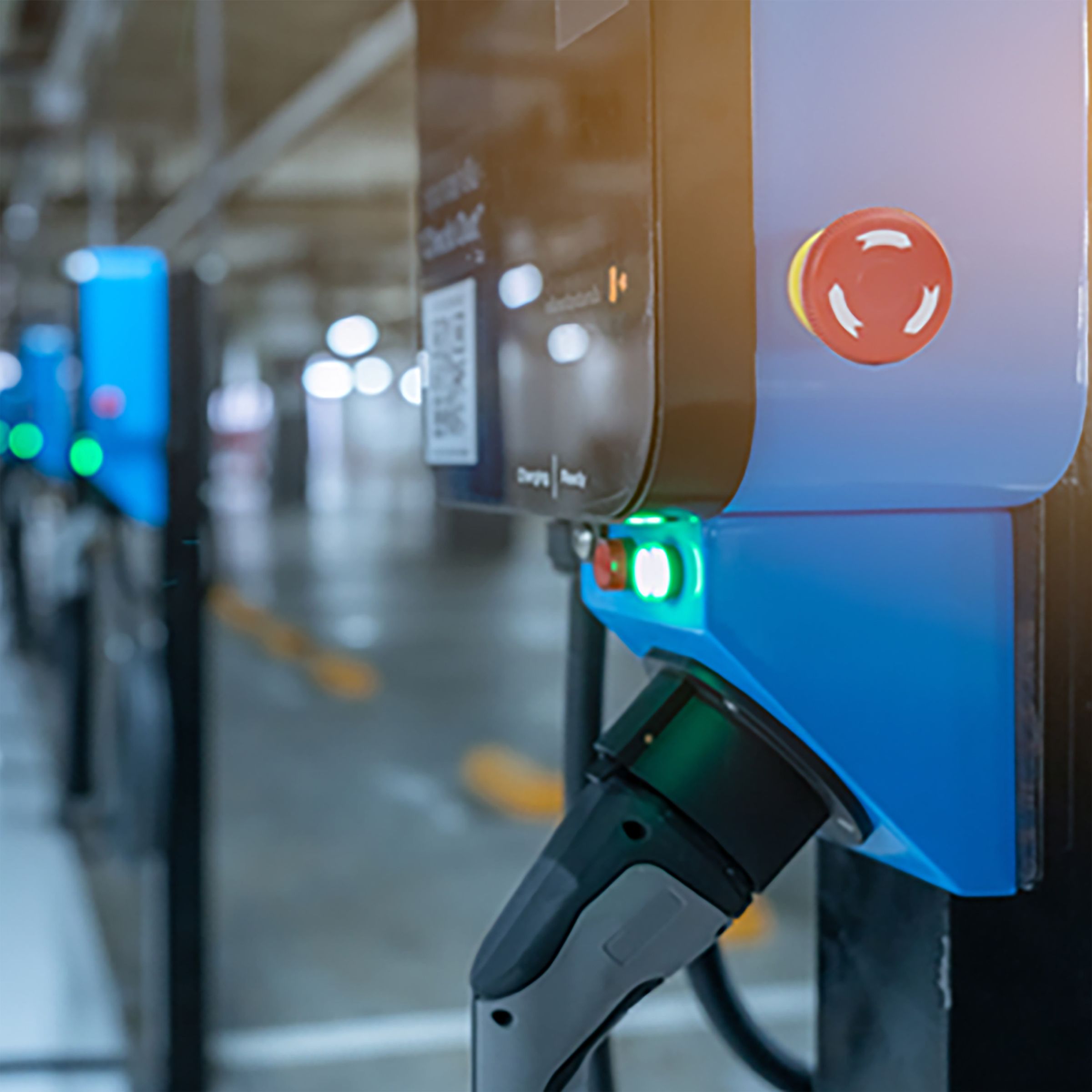
As we know, the growth of the electric vehicle market is dependent on the growth of electric vehicle infrastructure. Thankfully, the EVSE market in the United States is projected to grow at a compound annual growth rate (CAGR) of almost 40% each year to 2030. But what will this growth depend on? That would be the availability and quality of the electrical controls used to manufacture charging stations. Let’s conclude our EV Charging Guide with a list of the components found inside electric vehicle chargers:
- Pilot Devices: To provide bi-directional communication between human and machine.
- Miniature Circuit Breakers (MCBs): To protect against overload or short circuit.
- Residual Current Circuit Breakers: To protect against severe weather conditions.
- Disconnect Switches: To provide a disconnecting method required to meet prevailing standards for installation.
- Surge Protection Devices: To protect sensitive components against surges caused by lightning and over-voltages.
- Contactors: To provide a general-purpose current rating up to 115A and switch the power to the EV on or off.
- Energy Meters: To be used for commercial charging purposes, as there must be a measurement of energy consumed based on how much customers should be charged. A digital energy meter with a maximum of 80A capacity is used for this purpose.
- Terminal Blocks, Wire Duct and DIN Rail: To provide charging stations with ease of wiring during assembly.
- Gateways and Controllers: To power the entire network (only if the charging station is networked). Also includes a DC power supply, requiring single or three phase input voltage.
Many of the components required to build charging stations are available from c3controls — and we are ready and able to assist with world-class products, services and knowledge for all types of EV chargers. We hope this EV Charging Guide will help you as we all go electric. It’s your EV journey, and we’re here to help.
After our 'EV Charging Guide', check out the other articles in this Series on Electric Vehicles - New Trends in Technology.
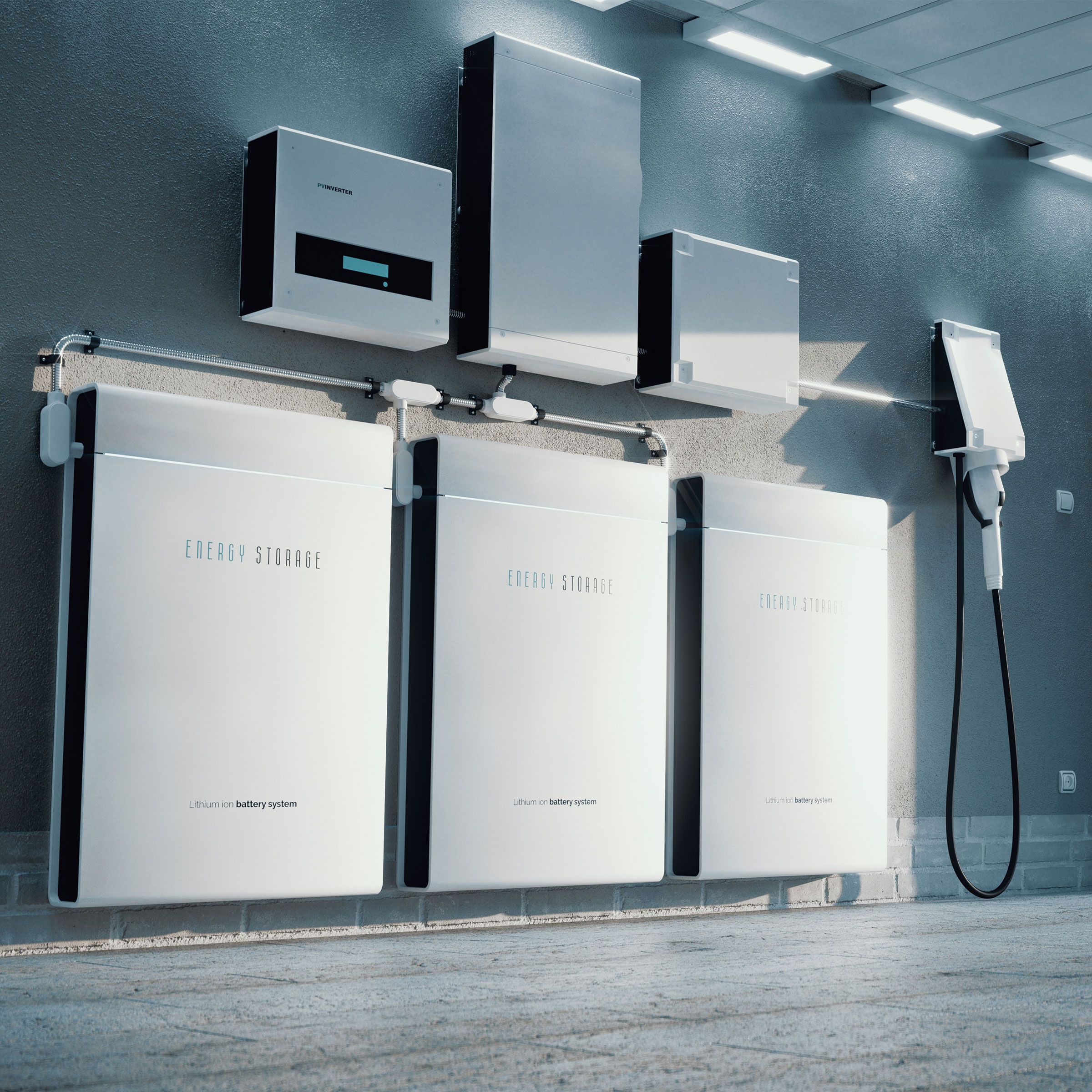
----------------------------------------
Disclaimer:
The content provided is intended solely for general information purposes and is provided with the understanding that the authors and publishers are not herein engaged in rendering engineering or other professional advice or services. The practice of engineering is driven by site-specific circumstances unique to each project. Consequently, any use of this information should be done only in consultation with a qualified and licensed professional who can take into account all relevant factors and desired outcomes. The information was posted with reasonable care and attention. However, it is possible that some information is incomplete, incorrect, or inapplicable to particular circumstances or conditions. We do not accept liability for direct or indirect losses resulting from using, relying or acting upon information in this article.
ISO 9001:2015
Certified
17+ Million Product
Configurations
Lifetime
Warranty
Guaranteed
Same-Day Shipping
Advantage Pricing
Save Up To 40%
c3controls Headquarters, USA
664 State Avenue
Beaver, PA 15009
